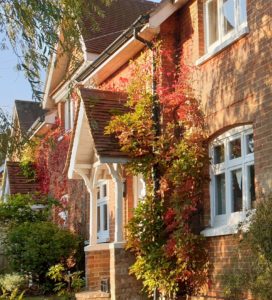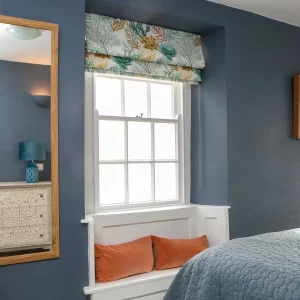As autumn approaches so does the perennial problem for many listed and period property owners. How can we keep warm this winter? Can we be more energy efficient? What can we do about draughts? Are there any energy-saving measures we can use? In summary, how can we deal with the lack of double glazing?
The government has committed to reducing net carbon emissions by 100% by 2050 compared with 1990. As so much of our housing stock is old it has a low EPC rating and listed properties aren’t even to required to have an EPC (they would all fail anyway!). About half a million houses in the UK are listed and, in the majority of cases, single-glazed windows can’t be upgraded to double-glazed windows because conservation officers are tasked with preserving the integrity of listed properties in line with their historical appearance. Yet the energy-saving benefits would be huge.
Figures from the Energy Saving Trust show that 18% of heat loss in the home occurs through windows. So, assuming that you aren’t allowed to install some of the elegant heritage double-glazing solutions which are available, what can you do to become more energy efficient instead?
Secondary double-glazing is recommended by conservation officers. It provides a barrier between the room and window and goes some way to preventing the wind whistling through your house. The big plus point, from the aesthetic point of view, is that secondary double-glazing is removable and the property can be returned to its original state without any damage to the fabric of the building. The drawback – if you live there – is that it’s unattractive, often ugly on the inside, prone to condensation and it makes it difficult to open and shut windows to ensure effective ventilation.
Blinds are another option. There are a number of alternatives available including those with a simple thermal backing to keep out the cold and keep in the warmth. You can also source pleated blinds which offer good thermal efficiency as the blinds have hollow pleats that trap the air and form a thermal barrier at the window, and each pleat is lined inside with aluminium for even greater efficiency.
Draught-proofing can be a very effective technique and is especially beneficial when used to improve the performance of sash windows. It also stops them from rattling! There are a number of specialist firms offering draught-proofing services to prevent heat loss. However, it’s not necessarily a good idea to use draught-proofing in conjunction with secondary double-glazing as it may cause condensation. Our old buildings need to breathe.
Curtains have always been an effective, if expensive, way of reducing heat loss. Old school heavy interlined winter curtains do a great job. More modern curtains offer a lining fabric which has thermal properties and gives you a lighter-weight pair of curtains which can be used year-round. Despite the lack of weight they are incredibly effective at keeping the cold at bay. You can feel the cold air falling from the windows when you open the curtains in the morning.
There’s a glimmer of hope that upcoming planning reforms and the COP26 UN Climate Change Conference may introduce the idea of a national policy on carbon reduction for historic buildings. This could pave the way for clear and consistent guidelines on how listed property owners can makes their homes more energy efficient.

Scope Creep in Renovation Projects
In the world of renovation, even the most well-planned projects can face unforeseen challenges. One of the most common and potentially disruptive issues that can




